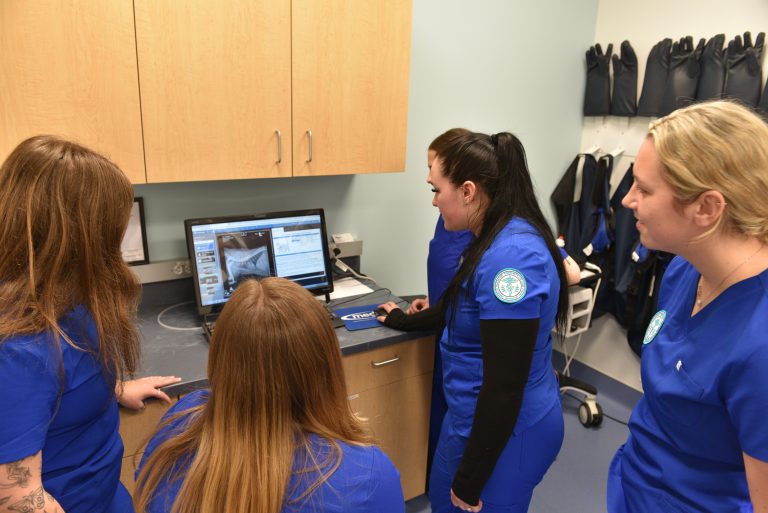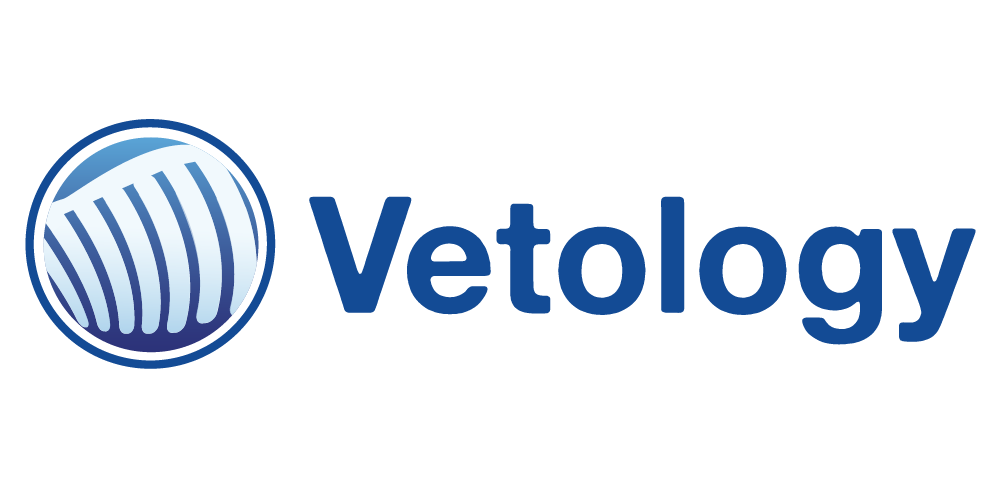
Veterinary Technology Students Collaborate with Vetology on AI Software
FOR IMMEDIATE RELEASE
Massasoit Community College Veterinary Technology Students Collaborate with Vetology on AI Software
BROCKTON, Mass (March 26, 2024) – This spring, the Massasoit Community College Veterinary Technology Program has partnered with Vetology to offer students access to a new veterinary artificial intelligence software: Vetology.ai. Massasoit is the first community college to receive access to this technology.
Vetology introduced their AI software in 2018 as a solution to the increasing demand for veterinary radiologists amidst the limited number of graduating certified radiologists. Utilizing state-of-the-art technology, Vetology’s AI can provide virtual reports, with 90% accuracy, within minutes while patients are still on location.
“We at Vetology.ai are honored to be in a position to extend access to our software to Veterinary Technician students at Massasoit Community College,” said Eric Goldman, Vetology President. “We firmly believe in the synergy of humans and AI, and providing early exposure to our cutting-edge tool equips the next generation with essential skills for their careers while empowering them to shape the future of patient care.”
With Vetology, Massasoit students learn from the software in real time and gain more experience. In return Vetology gains insight from the students on how the program is working and how humans and AI can work better together.
“The generous partnership with Vetology enables students in the Massasoit Veterinary Technology Program to learn cutting edge technology that is the future of veterinary medicine,” said Roda Motta, Director of the Veterinary Technology Program. “Training better veterinary technicians with better tools for better patient outcomes.”
Massasoit’s Veterinary Technology Program is an AVMA CVTEA accredited program. Students who graduate from this program are eligible to take the Veterinary Technician National Exam (VTNE). In Massachusetts, students are required to graduate from an AVMA CVTEA accredited program and obtain a passing score on the VTNE before they can apply for credentialing through the Massachusetts Veterinary Technician Association.
Massasoit students currently in the Veterinary Technology Imaging course are the first class to have access to the Vetology database. With the program they are learning to improve their positioning skills and reduce the number of radiographs taken.
“The software is very helpful for our field,” said Jenna Hodgson, Vet Tech student, Class of 2025. “The feedback is quick and helps technicians learn what a good radiograph looks like. This is very helpful for students who are learning. It will be very helpful having this experience going into practice.”
Interested in learning more about the Massasoit Veterinary Technology program? Visit our Veterinary Technology landing page.
For more information on how Vetology’s AI-driven radiology reports and boarded radiologist services can support your practice, visit Vetology.ai to contact us.
# # #
ABOUT MASSASOIT COMMUNITY COLLEGE
Founded in 1966, Massasoit Community College offers students from southeastern Massachusetts and beyond access to more than 60 associate degree and certificate programs across arts, sciences, applied sciences, healthcare, and technology at locations in Brockton, Canton, Middleborough, and online. More than 8,000 students enroll for credit at Massasoit each year; another 1,500 students annually enroll in non-credit community education or workforce development courses. Typically, more than 800 students graduate from Massasoit with an associate degree or certificate each year. Massasoit students are given access to wraparound services provided on campus to support their success inside and outside the classroom. For more information, visit massasoit.edu.
ABOUT VETOLOGY
Vetology is a leading innovator in veterinary artificial intelligence and teleradiology, dedicated to enhancing diagnostic accuracy and efficiency. Our AI-powered tools and teleradiology services support imaging diagnostics, streamlined workflows, and enables veterinarians to make informed treatment decisions swiftly. Vetology combines advanced AI solutions with strong professional relationships to help veterinary teams deliver exceptional care.
FOR MEDIA INQUIRIES, PLEASE CONTACT US




